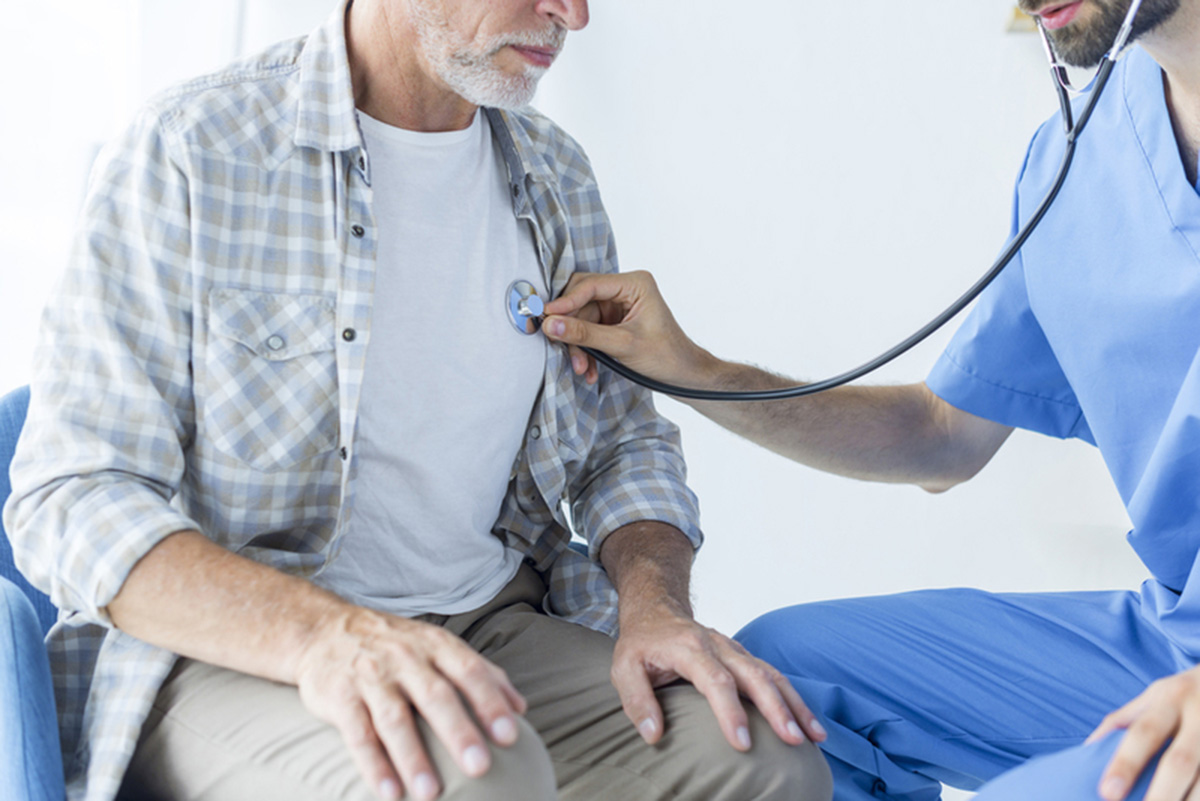Chronic obstructive pulmonary disease — shortened to COPD — is an umbrella term for several progressive lung diseases. Though it often progresses very gradually, some patients will reach the more severe stages of the disease more quickly. COPD is divided into four stages, which are determined based on a measurement called the forced expiratory volume in one second, or FEV1.

- In Stage 1, also called mild COPD, patients will have an FEV1 of about 80 percent (as compared to the expected FEV1 in healthy people without COPD).
- Stage 2, or moderate COPD, features an FEV1 of 50 to 80 percent.
- During Stage 3 or severe COPD, patients are expected to have an FEV1 of 30 to 50 percent.
- Stage 4, also called very severe or end-Stage COPD, marks the end of the progression of this disease. Patients' FEV1 results can drop to below 30 percent, or they may maintain the results they had in Stage 3 but have low blood oxygen levels.
Stage 1 or mild COPD
The first stage of COPD does feature mild airflow restrictions, but patients will either not yet notice any symptoms or mild symptoms that are easily dismissed as being due to aging or a cold. You may notice mild shortness of breath that's worse when you exercise, a cough that won't go away, and extra phlegm.
Owing to these fairly non-invasive symptoms, people rarely see a doctor at this point. If COPD is diagnosed in Stage 1, treatments suggested by your doctor will likely include:
- Quitting smoking, if you smoke — this is the number one thing you can do for your health.
- Exercising regularly but responsibly.
- Improving your diet.
- Bronchodilators that serve as "rescue inhalers", on an as-needed basis.
- An annual flu shot and staying to to date on pneumoccocal vaccines, to help prevent respiratory infections that can lead to flare-ups.
Stage 2 or moderate COPD
Typical experiences at this point include:
- A persistent cough
- A noticeable increase in sputum production
- Being short of breath (experiencing dyspnea) when you are more physically active
- Wheezing when you exert yourself
- Feeling fatigued and finding it hard to sleep
In Stage 2 of COPD, patients can also begin to experience COPD exacerbations (flare-ups) — periods of time during which their symptoms suddenly grow much worse. These can range from mild to so severe that you need to be hospitalized. Signs you're dealing with a flare-up can include:
- More severe dyspnea
- Even more phlegm than usual, and your mucus may take on a different texture and color as well
- Intense bouts of coughing
- Confusion
During Stage 2, all the same treatments that we mentioned for mild-stage COPD still apply. At this point, it's possible that your healthcare provider will advise you to start a pulmonary rehabilitation program as well. This integrative approach will include exercise, breathing techniques, nutritional advice, and education about medications, COPD triggers, and other factors that can make your life easier.
Stage 3 or severe COPD
Symptoms at this point include:
- More severe shortness of breath that affects you not just during exercise or other physical efforts, but even at rest
- Less energy
- Feelings of tightness in the chest
- Wheezing, or a whistling sound while you breathe (due to obstructed airways)
- Being more vulnerable to colds and other respiratory infections
- Swelling that is likely to affect your ankles, feet, and lower legs
Your treatment plan during Stage 3 COPD will usually feature:
- Short-acting (rescue) as well as long-acting bronchodilators
- Steroid medications to fight inflammation
- Antibiotics as necessary
- Participation in a pulmonary rehabilitation program
In some cases, Stage 3 patients will begin using supplemental oxygen.
At this point, you need to have a plan in place in case you suffer an exacerbation. Keep medications, information about who your doctor is and their contact details, and a list of medications you take on your person. Seek immediate medical attention if you really can't breathe despite using your inhaler, you notice a rapid heartbeat, your lips or nails become blue, or you are confused.
Stage 4, very severe, or end-stage COPD
Your management plan for end-stage COPD will likely continue to include:
- Short-acting bronchodilators
- Long-acting bronchodilators
- Steroids
- Antibiotics as needed
- Getting a flu shot every year as soon as flu season begins, and being up to date on your pneumonia vaccine
- Attending a pulmonary rehab program, which can include working with a nutritionist to battle involuntary weight loss
- Oxygen therapy, often for much of the day or continuously
Stage 4 COPD patients may also be candidates for several kinds of surgery if their medications are no longer effective — these include a bullectomy, lung volume reduction, and even a lung transplant. Discuss the risks and benefits with your doctor in detail.
The low blood oxygen levels seen at this point can result in serious and life-threatening complications, which include:
- Hypoxia (not enough oxygen reaches your tissues)
- Chronic respiratory failure
- Cor pulmonale (right-sided heart failure)
In conclusion
- Photo courtesy of SteadyHealth
- www.ncbi.nlm.nih.gov/pubmed/29161163
- https://www.ncbi.nlm.nih.gov/pmc/articles/PMC5777377/
- https://www.ncbi.nlm.nih.gov/pubmed/23988767


Your thoughts on this